Turkish Marbling Ebru Lessons Workshops In Istanbul
55,00 €
Turkish Paper Marbling Art in our Art Studio everyday at 16:00 by appointment.
Please Contact for reservation : +905442201022 ( Call or Whatsapp )
Description
Turkish Marbling Ebru Lessons Workshops In Istanbul
Everyday : At 16:00 – ( Please ask for Alternative Hours )
Duration : 2 hours
Location : Sultanahmet / ISTANBUL
Lesson Teachings : available in English, French, Russian, Turkish
Turkish Marbling – Ebru Lessons in Istanbul. Turkish marbling, also known as Ebru art, is a traditional Turkish technique of paper marbling that involves creating colorful patterns on paper or fabric. The process involves floating pigments on the surface of a thickened water solution, typically made from carrageenan or gum tragacanth, and then manipulating the pigments into various designs using tools like brushes, combs, or needles. Once the desired pattern is achieved, a piece of paper or fabric is carefully placed on the surface to transfer the design. Turkish marbling has a rich history and is often used in bookbinding, calligraphy, and decorative arts. It’s appreciated for its intricate and unique patterns, which can range from simple, elegant designs to more complex and elaborate compositions.
What is Included ;
* In our lessons; we can teach beginner & advanced level with Turkish Professional Artists
* Traditional Ottoman Turkish style paper marbling class.
* All equipment for Turkish Marbling – Ebru Workshop
* Workshop Area, Aprons & Gloves
* Turkish Tea & Water
Additional Information ;
Here’s an overview of what typically happens in a Turkish marbling workshop:
- Introduction to Ebru: Participants are introduced to the history and significance of Ebru in Turkish culture. They learn about the origins of the art form, its historical development, and its importance in traditional Turkish arts.
- Materials and Tools: The workshop instructor explains the materials and tools used in Ebru, including special pigments called “size,” brushes, combs, and trays for holding the water. Participants learn how to prepare these materials and how to use them effectively.
- Preparing the Water: One of the key steps in Ebru is preparing the water for marbling. Participants learn how to mix the size (a gel-like substance made from carrageenan or other natural materials) with water to create a viscous solution that will hold the pigments on the surface.
- Creating Designs: Participants learn various techniques for creating designs on the surface of the water. These techniques may include dropping or splashing pigments onto the water, using brushes or combs to manipulate the colors, and blowing air through a straw to create intricate patterns.
- Transferring the Design: Once the desired design has been created on the water, participants carefully place a sheet of paper or fabric onto the surface to transfer the design. The paper absorbs the pigments, creating a unique marbled pattern.
- Experimentation and Practice: Throughout the workshop, participants have the opportunity to experiment with different colors, techniques, and patterns. They receive guidance and feedback from the instructor as they practice their marbling skills.
- Finishing Touches: After the marbled paper has dried, participants may have the option to add additional embellishments or details to their artwork, such as calligraphy or gold leaf.
Turkish marbling workshops provide a hands-on experience for participants to learn about this beautiful and intricate art form. They also serve as a space for cultural exchange, creativity, and artistic expression, preserving and promoting the rich tradition of Ebru for future generations
Our Artists are Professional in Marbling – Ebru Art & Local Artisans.
Here is our adres : https://www.lesartsturcs.com/contact-us/
Google Maps : https://goo.gl/maps/uXuyRmELZsx
Bazaar Turkey – Les Arts Turcs
Alemdar Mh. Incili Cavus Sk.
No: 19 Floor : 3 (Behind The Underground Cistern) Sultanahmet 34110
Istanbul, Turkey
Contact = +905442201022 ( Mr. Alp )
TURKISH MARBLING, EBRU
Marbled paper, called ebru in Turkish, was used extensively in the binding of books and within the calligraphic panels in Turkey. The existing word ebre in Eastern Turkish, meaning variegated, points to the fact that marbling might have been known by the populations of Central Asia. Its origin might ultimately hark back to China, where a document from the T’ang dynasty (618-907) mentions a process of coloring paper on water with five hues. In the early examples from the 16th c. in the Ottoman-Turkish era, ebru appears in the battal (stone) form, namely without any manipulation. Interestingly, several variations developed in time, giving us types such as gelgit, tarakli, hatip, bülbül yuvasi, çiçekli (respectively come-and-go, combed, preacher, nightingale’s nest, flowered, etc.) An attempt has been made here to show some of its principal patterns, with samples by the master marblers of this century chosen from our collection.
Ebru technique consists of sprinkling colours containing a few drops of ox-gall on to the surface of the bath sized with kitre (gum tragacanth) in a trough. By carefully laying the paper over the bath, the floating picture on top of it is readily transferred to the paper; thus, each ebru is a one of a kind print. To obtain beautiful ebru results, one needs to have a light hand, refined taste, and an open mind to the unexpected patterns forming on the water. Patience and a good knowledge of traditional culture are characteristic of ebru masters.
After the 1550’s, booklovers in Europe prized ebru, which came to be known as ‘Turkish papers’. Many specimens in their collections and in the several album amicorum books are visible today in various museums. Also, early texts dealing with ebru, such as “Discourse on decorating paper in the Turkish manner”, published in 1664 by Athanasius Kircher in Rome, helped to disseminate the knowledge of this kind of marbling art. There is agreement amongst scholars that the so-called Turkish Papers played a colourful influence on the book arts in Europe.
Materials used in Ebru Marbling Art

Only logged in customers who have purchased this product may leave a review.

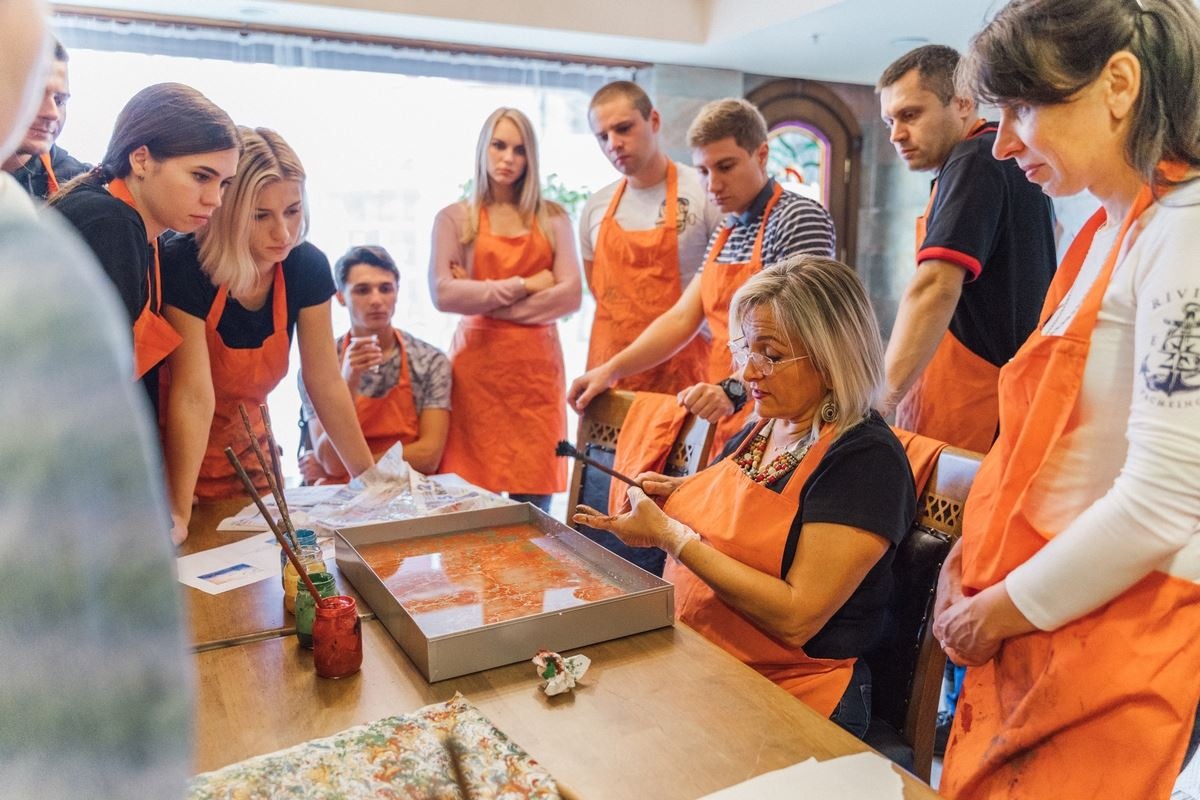
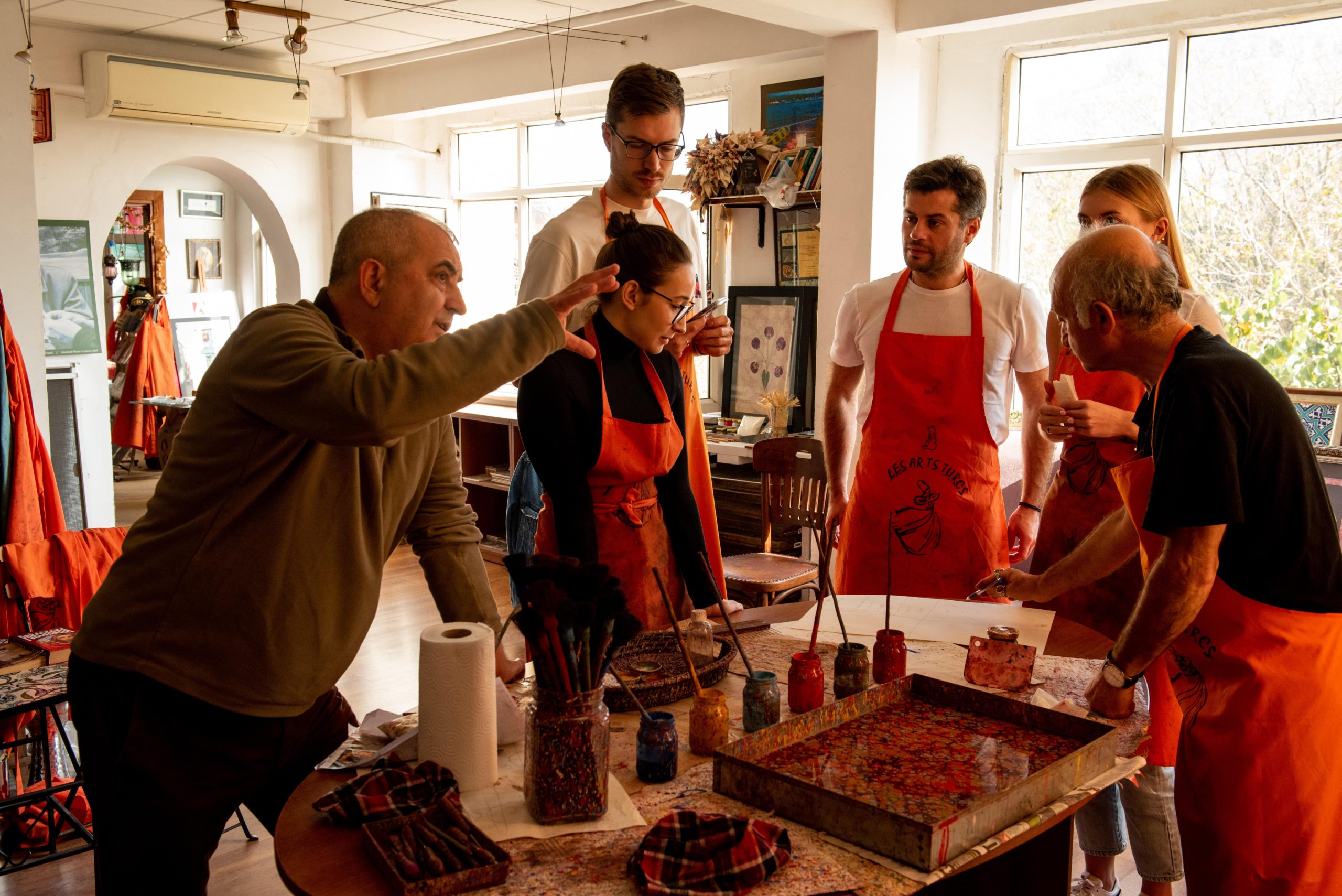
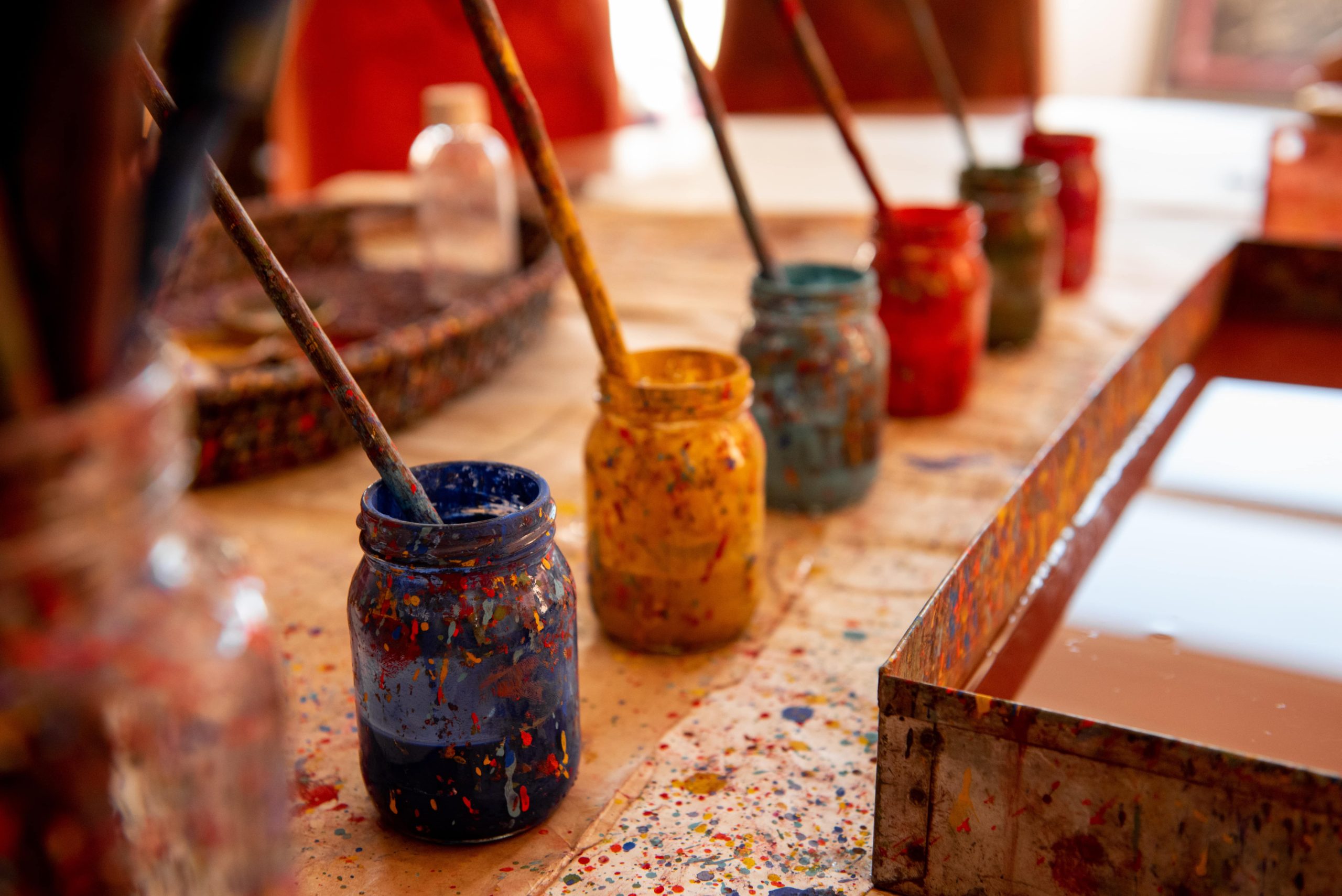
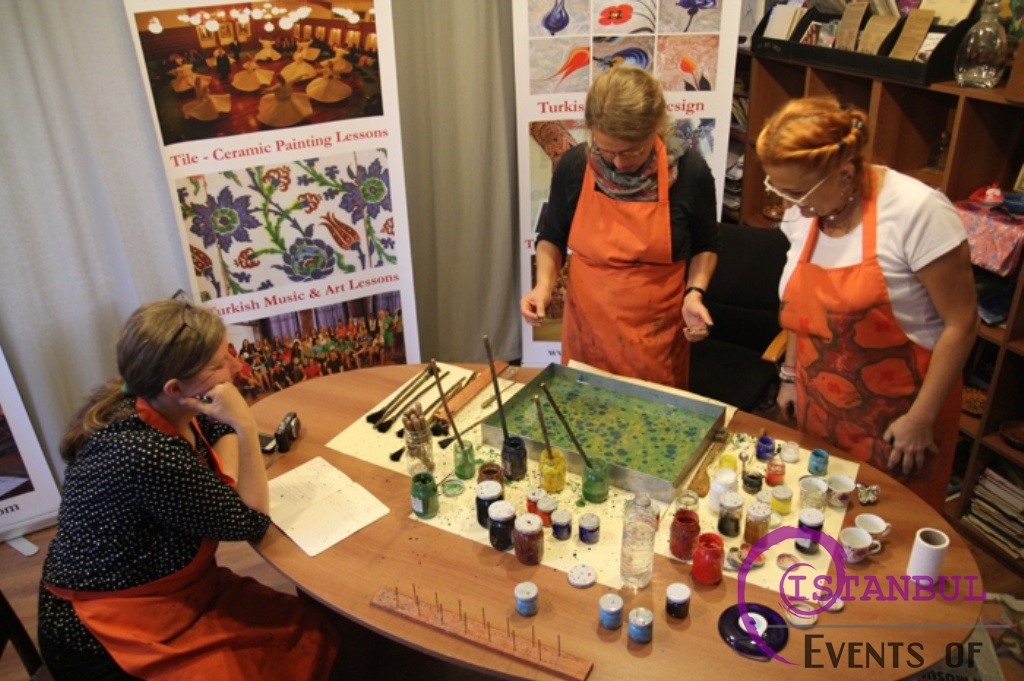
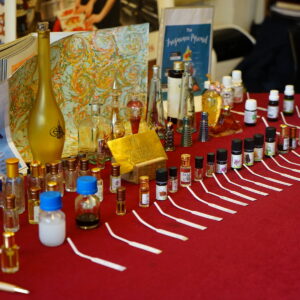
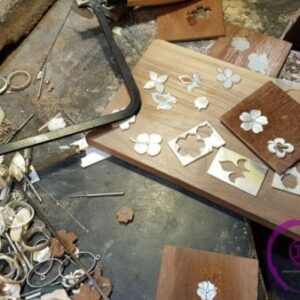
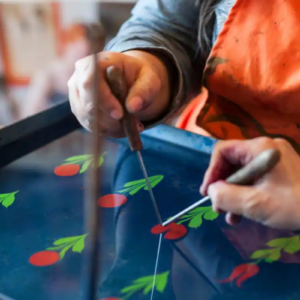
Reviews
There are no reviews yet.